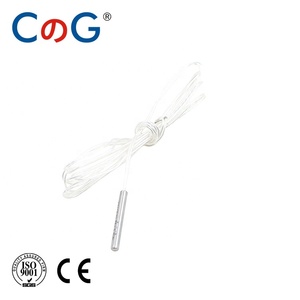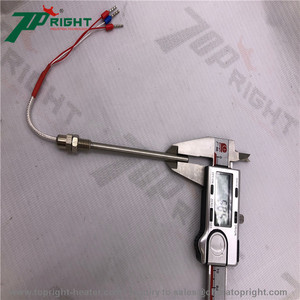Introduction to PT100 PT1000 Ceramic Wire Wound Sensors
The PT100 and PT1000 ceramic wire wound sensors are essential components in temperature measurement applications, prized for their accuracy and stability. These sensors utilize the properties of platinum, which changes its resistance in response to temperature variations. With their robust ceramic construction, these devices are highly durable and suitable for various industrial environments. The increasing demand for precise temperature measurement across numerous sectors highlights the importance of these sensors, ensuring optimal conditions in processes such as manufacturing, food production, and more.
Types of PT100 PT1000 Ceramic Wire Wound Sensors
When it comes to ceramic wire wound sensors, there are several types to consider, each catering to specific applications:
- PT100 Sensors: These sensors exhibit a resistance of 100 ohms at 0°C, making them ideal for applications requiring precise temperature monitoring in industrial environments.
- PT1000 Sensors: With a resistance of 1000 ohms at 0°C, PT1000 sensors are more sensitive and suitable for lower temperature ranges, providing high resolution in temperature measurement.
- Wire Wound Configuration: The wire wound design promotes enhanced thermal response times, ensuring faster readings to adapt to temperature changes efficiently.
- Ceramic Insulation: The use of ceramic materials in insulation offers exceptional stability and resistance to chemical environments, extending the sensor’s lifespan.
Function, Feature, and Design of PT100 PT1000 Ceramic Wire Wound Sensors
The PT100 and PT1000 ceramic wire wound sensors are engineered with various functionalities and features that demonstrate their efficacy:
- High Accuracy: These sensors boast a high degree of accuracy, with a typical tolerance of ±0.1°C, enabling reliable and consistent temperature readings.
- Wide Temperature Range: The operational temperature range of PT100/PT1000 sensors typically spans from -200°C to +850°C, making them versatile in numerous industrial applications.
- Fast Response Time: The design facilitates rapid thermal response, allowing for immediate temperature readings and enhancing process control.
- Robust Build Quality: The ceramic construction ensures resilience against harsh environmental conditions, including moisture, dust, and corrosive substances.
- Minimal Drift: Due to the unique properties of the materials used, these sensors experience minimal drift over time, enhancing their reliability and longevity.
Applications of PT100 PT1000 Ceramic Wire Wound Sensors
The versatility of PT100 and PT1000 ceramic wire wound sensors makes them ideal for numerous applications across various sectors:
- Industrial Process Control: Used extensively in manufacturing processes, these sensors help maintain optimal temperatures to ensure product quality and safety.
- HVAC Systems: In heating, ventilation, and air conditioning systems, they monitor indoor climate and ensure user comfort while optimizing energy use.
- Food and Beverage Industry: PT100/PT1000 sensors are applied in the monitoring of temperatures in food processing, preservation, and storage to comply with safety regulations.
- Research and Laboratory Settings: Their high accuracy is essential in scientific research, where precise temperature control is paramount.
- Automotive Industry: These sensors are utilized in various applications, including engine temperature monitoring and climate control systems.
























































































































































































